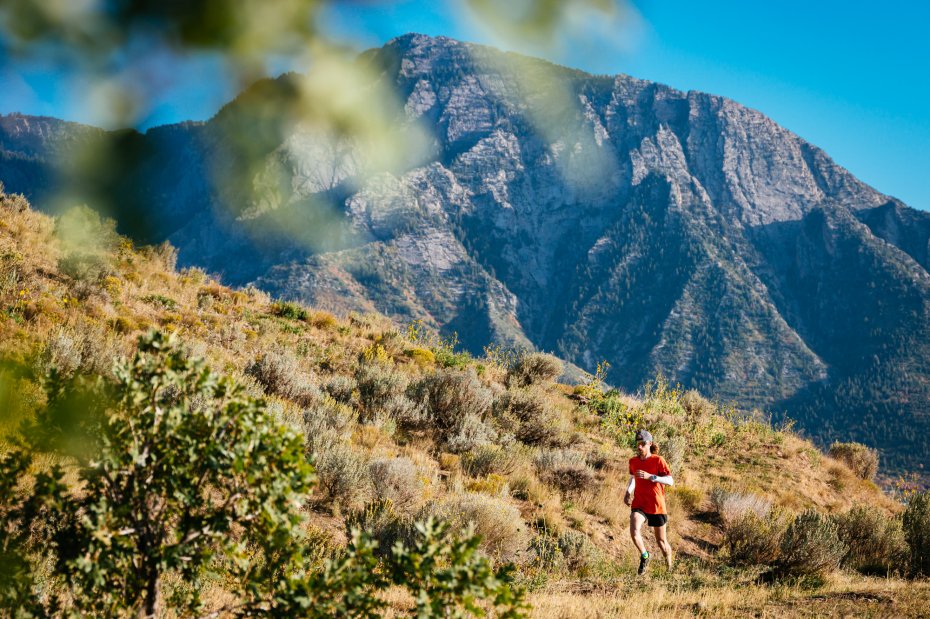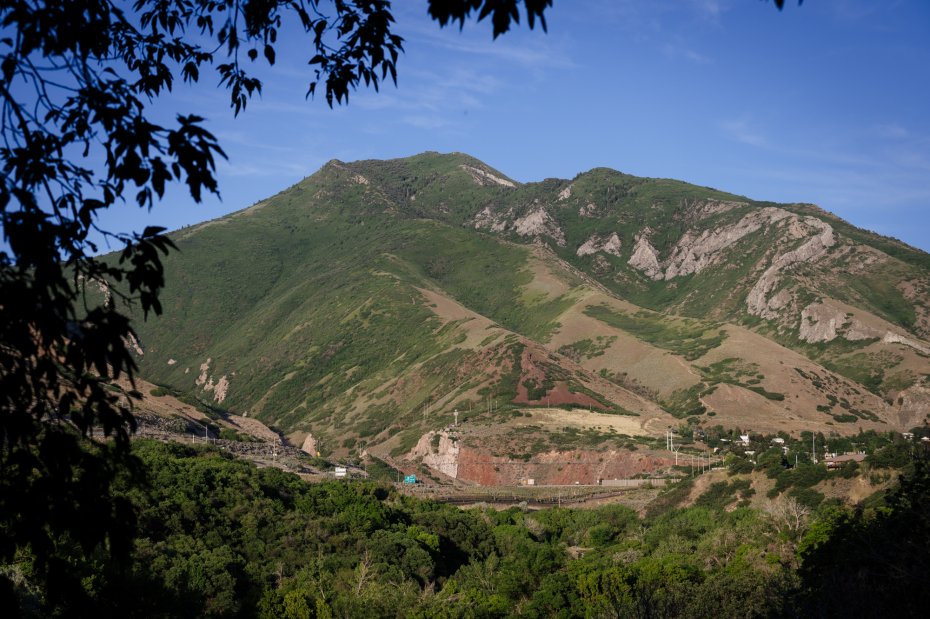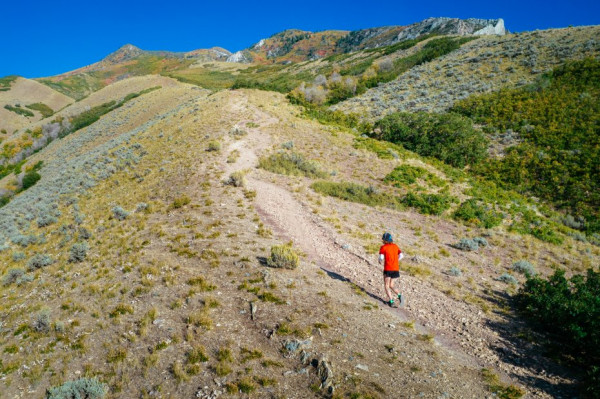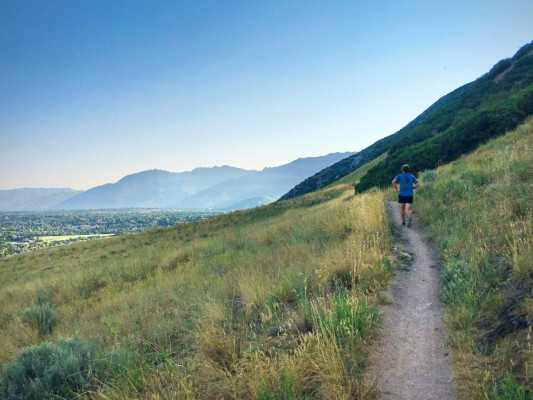10/6/2021 Using Trail Running to Prepare for Ski Season
By Jimmy Picard, physical therapist, performance coach, and owner of Redefine PT
The mornings are getting colder and the days shorter. Soon the trails will be covered in snow and you’ll be trading your trail shoes for skis. And you know what that means… ski season is right around the corner! And while we’re all getting excited for the snow to fly and daydreaming of long days touring, the reality is that we still have a few more months before we are ripping down the mountain with any regularity.

But don’t despair! Right now is the perfect time to start preparing your body for the demands of backcountry touring. And although it may not be the same as skiing waist-deep powder, the work you put in now will translate to more fitness come winter. In other words, you’ll thank yourself later.
Generally speaking, there are two things you can do to start your season with a bang: build a solid aerobic base and strengthen your legs. This article will tackle the former while the next post will take on strengthening. Both can get complicated quick, but for most folks, a simple approach works best.
First things first, we need to build a solid aerobic base
When it comes to improving fitness and building the capacity to move in the mountains, it all starts with your aerobic base. Simply put, your aerobic base determines how efficiently your body can deliver oxygen to working muscles and then the muscle’s ability to utilize that oxygen. A big aerobic base lays the foundation to tolerate harder training sessions and the long days of touring that will come later this winter.
How do we build our aerobic base?
Easy, slow runs, hikes, and walks work perfectly. The goal is to keep the effort below your aerobic threshold. Put simply, your aerobic threshold is the point at which your body transitions from fueling via fat oxidation to glycolysis. Below your aerobic threshold, your body runs clean and efficiently. Go above your threshold and there you are less efficient and more waste products, such as lactate, build up.
So what does training below your aerobic threshold look like in practice? In his book, Training Essentials for Ultrarunning, Jason Koop calls this your “Forever” pace and relates it to a rate of perceived exertion (RPE) or 5 or 6 out of 10. In Training for the Uphill Athlete, Steve House prefers to quantify these efforts with heart rates in zone 1 or 2 (the top of zone 2 typically corresponds to your aerobic threshold.)
An easy formula to determine your aerobic threshold HR is the MAF (Maximum Aerobic Function) method. Simply subtract your age from 180 and that number is roughly your aerobic threshold. For example, I’m 36 so a decent estimate for the top of my zone 2 is 144bpm.
Basically, you just need to move at a steady pace, where your breathing is moderate and you are still able to carry on a conversation.
Don’t overcomplicate it. If you have access to rolling terrain or mountains that’s great, but not necessary. The key is to keep the intensity under control and make sure not to overdo it. These sessions should be EASY! The benefits of this training require that you stay below your aerobic threshold.
Start where you are
If you’ve been training for trail races all summer you will have some residual fitness and might be able to jump into longer efforts in the mountains. If you’ve been hiding inside, drinking beer, and watching Netflix, you should ease into it starting with short, easy hikes or maybe even long walks.
Aerobic base building sessions can last anywhere from 30 mins, up to 6+ hrs. Aim to get 4-7 sessions a week.

Run/Power hike uphill
Once you have a few weeks of this training under your belt, you can add specific uphill work. You can think of this as dryland training for the steep climbs to come later this winter. One to two of these a week is a great starting point.
Find a steep climb and aim to get at least 2,000ft of vert and be out for 2-3 hours. If you’re in SLC, think of places like West Grandeur, White Pine, or Olympus. It’s also a good idea to use these efforts to get comfortable using poles again.
While these days are more challenging you should still aim to keep the effort reasonable and not be gasping for breath. You will likely creep up above your aerobic threshold. That’s okay, just be sure to not overdo these sessions as they can be very taxing on the body. Remember this is still “preseason” and we have a long winter ahead.
Try it out
If you are local and need some motivation, SkyRun will be hosting weekly group runs up the west face of Grandeur every Tuesday in October. This is a great opportunity to practice these types of efforts and meet fellow runners and skimo athletes. I will be present and happy to answer any questions.
The next article focuses on strength training for ski touring. If you are interested in a structured strength program email jimmy@redefine-pt.com. I will be setting up a weekly group session beginning mid to late October.
Jimmy Picard is a SLC-based physical therapist and performance coach who recently opened Redefine PT to specifically treat runners and mountain athletes. Through this work, he elevates athletes to perform at their peak. Personally, he has competed in races such as Run Rabbit Run 100, Speedgoat 50k, Power of Four, Wasatch Powderkeg, and Crowbar. Check out his work at https://redefine-pt.com/ and on Instagram at @redefinephysio.
Comments








